Epic Role Playing is flexible and realistic, yet with enough opportunities for death-defying heroism to satisfy the wildest imagination. The highlights of Epic Role Playing include a tactical and fast-paced combat system that integrates stealth and magic directly into the strategic options available to characters. It uses a streamlined and intuitive game structure with a 10-sided die mechanic.
Epic Role Playing uses a unique and expansive magic system replete with non-standard disciplines, such as the arcane science called metaphysics and the body magic known as shen, that integrate smoothly into the skill and tactical system.
Character design uses professions that are defined directly from the society of the campaign setting to provide unique characters that have a cultural context from day one. With the flexible skill system offering a diverse multitude of special abilities and directions for maturation, only you (not a rigid game system) will control your character’s growth.
Our campaign world designed for Epic Role Playing, Eslin, provides numerous richly detailed non-standard fantasy settings (no stock elves and dwarves here). Of course, Epic Role Playing is a modular system and is designed to be adaptable to your custom campaign world with ease.
How do I start playing?
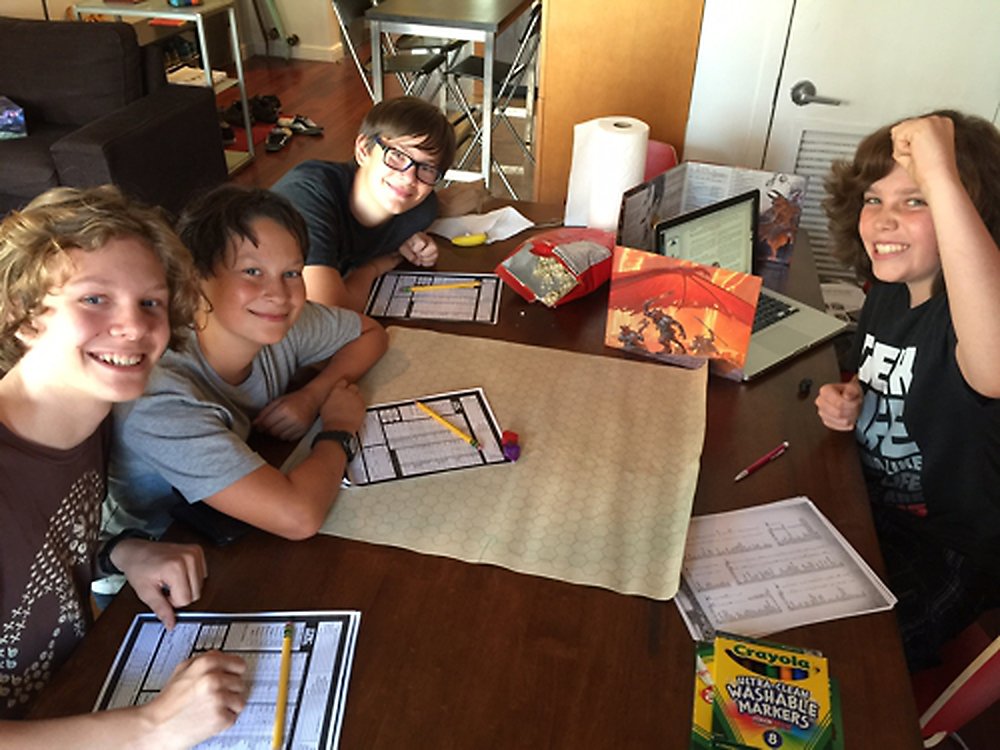
Visit our online store or visit your local hobby shop and purchase the Epic RPG manuals: The Game Manual, Bestiary, and Atlas of Eslin. To begin, you’ll also need to grab: some friends to assemble your gaming group - we recommend three to seven - some ten-sided dice, pencils and paper, plus mounds of chips and salsa. For the technically minded, computers are also fantastic for providing organization and even adventuring soundtracks. Then, craft your characters as detailed in the Game Manual and send them into legend!
New in the Mark III revision
The Mark III Revision of the Game Manual streamlines the game more while retaining Epic’s tactical options. Among the highlights of the Mark III Revision:
- Vital Attributes: they now range from -10 to 10. VAs in the range of -2 to 2 are considered average, while -10 and 10 represent the extreme ranges of human variation. VAs now more directly modify facets of play, and VA rolls have been given a more robust functionality becuase they scale just like skills.
- Skill Progression: Progression rolls for skill advancement take the place of adding and tracking experience, and are directly linked to important moments of play in the game.
- Simpler Tactical Play: Attack rolls now directly affect damage and the damage roll has been removed, greatly streamlining the combat experience. And more!
Gamer-requested FAQ
You asked for it, you got it. Welcome to the gamers’ extended FAQ. And we do mean “extended,” chock full of information for the curious. It is divided into two sections: A detailed overview of Epic RPG’s systems of character development, tactical combat, magic and its setting, Eslin, and specific questions from gamers which have been posted to forums and to us here at Dark Matter. If you have any other questions, please feel free to email us.
How does Epic Role Playing deal with character creation and growth?
This is our secret-sauce. In Epic RPG, characters are culturally defined. When you make a character, he or she is endowed with a background history and then chooses a guild, mentor or organization with which to initially study. For example, if you want to play a warrior in the Realm of Rullaea there are mercenary companies (Archers of the Scarlet Mark, Sepi’s Gauntlet, etc), Constables (Constables of Brightwall), scouts and rangers (Storm Wardens, Leaf Walkers, etc), knights (Paladins of Tellimod, Shields of Adronel, etc), and ascetic warriors (School of Orondamus) among the over forty guilds, each with their own specific culture and makeup. Just as much diversity exists in other types of professions, from royal spies, to pirates, to politicians, to priests. These callings (and the background history) dictate the initial skills of the character, but more importantly, give the character social status and position. Each profession has secret masteries and grandmasteries that only their members can learn, some of which affect skills, some social or monetary factors that can radically affect story. Although the character has a definite profession or guild at creation, they can develop the character after that however they wish. Progressing in, leaving, or a switching to a different profession is all handled by role playing. So is the attainment of secret masteries and titles associated with them. This process was designed so that characters develop as much through game play, plot, and character development as they do from “experience point” allocation.
We also made a real attempt to make each profession, school or guild complex in its own right with unique social standings, skill sets, secret masteries and complex inter-relationships. For example, the Paladins of Tellimod, mentioned above, cannot “lay on hands” or radiate a “protection from evil” aura. They are defenders of the Pentonite religion and are trained in military arts, theology and horsemanship. They derive a set of stratagems called the Denui from their religion that provides significant game advantage in battle. And the Pentonite Priests in Rullaea are not healers. They are powerful socially and hold great influence over people, calming their fears and inspiring them to glory. They are granted no “spells” from a god, but can perform extraordinary feats because of their enlightened mind.
How does Epic provide a strong competitive experience for gamers interested in tactical combat?
Here’s what we think makes Epic RPG combat work in an excellent way from a tactical standpoint, and also from a player involvement/choice standpoint. We’re very pleased with the way the combat system increases the tactical options and choices available for players, creates thrilling game-play and immediacy that preserves a sense of danger and excitement from the first time a character goes into combat until the final battle of a year-long campaign chock with junked-up heroes. Combat is divided into turns of 10 seconds each. In our experiences, most combats are resolved in two to six turns, except major set-piece battles.

- Defense is active, not passive. A skill roll from an attacker is matched against that of the defender. Characters can respond to attacks with evasion, parries, shield blocks or even other skills, as they deem appropriate in a specific situation. Their skill with movement or a weapon directly effects their defense roll. Characters possess a default of one defense roll per 10-second combat turn, and once they have used up their defense roll(s), any attack from their opponent or other opponents that is even marginally successful will strike them. The advantage of shield walls, staying with your companions for mutual defense, even just having a shield (extra defense action) are interesting and evident. Five on one is bad for the one, no matter how heroic she is. There are many and varied opportunities for developing multiple defense rolls in a turn, and characters who spend experience getting there obtain major advantages in combat. Of course, there are also avenues and masteries that provide a veteran character with multiple attacks per turn.
It’s an amazing thrill to see an attacker roll a massive attack number at you (something that would probably tear you limb from limb if it struck), and to then pull out an even more amazing parry roll, diffusing the skill of your opponent with your own.
-
Armor protects (and slows). The amount of armor a character is wearing negatively affects damage received from an opponent. It has nothing to do with whether the character is struck or not. Of course it also adds weight to a character, which negatively impacts mobility and speed, which receive a premium in Epic RPG.
-
Wounds weaken. A character possesses a number of life points (LP). Default for a normal-sized person is four. The character possesses (delineated in boxes on the character sheet) six injury levels, ranging from IL 0 to IL 5. As he receives damage the character moves through the boxes from 0 to 5, adding damage received. Once the IL0 box is full with, say, four points, you move on to IL1, and so on. Moving past the fifth injury level results in death. Here’s the thing: as you move through injury levels, the box you currently occupy is a negative modifier on all actions. For example, if you currently reside in IL 4, every defense, attack, movement, variant (spell) casting, nose pick, etc. receives a -4 modifier to your 2d10 roll. If the character is close to death, chance of dying increases, due to weakness, dizziness, blood loss, broken bones, etc.
-
Pointy things remain dangerous. Life Points range usually from 4 for a normal person to 8 for a truly tricked-out warrior who has spent most of the campaign getting to that point. An “average” weapon will do 2d10 damage plus skill modifiers. You do the math. Five crossbow bolts from five red-shirts for medium to max damage into an unarmored Conan (who with his bad-ass two defenses might avoid two of them, leaving him defenseless against the other three) will still almost end his heroic life. Of course a “normal” non-warrior might be dead with the first shot. Armor becomes very important in this scenario, reducing the damage taken from each bolt.
-
Magic must be defended against like any other attack. A pulsating, bubbling beam of gamma radiation is like an arrow (albeit a green, bubbling gamma radiating-arrow), and can be avoided by getting out of the way, or by possibly sacrificing your shield to attempt to block it. Area-of-effect spells just work on characters in the middle of ground zero, unless she is on the outer edges of the area targeted. Variants that affect the mind or internal aspects of a character can be defended against using a skill called Dominion (which powers the activation of magic as well), but again, the mental and spiritual focus required to defended against such arcane attacks requires the devotion of a character’s defensive action, possibly leaving him or her open to physical attack. Poison is poisonous. If it gets through your PL, you’re screwed - taking whatever damage it delivers or worse, unless someone in your group has thought ahead and gotten an antidote.
-
Range also matters. If somebody with a dagger closes on a line of pikemen, you can bet maybe three of those pikemen are going to get an opportunity to attack him, no matter how fast he is, before he stabs with his pig-sticker.
-
Options. There’s an entire range of combat options (feints, defensive postures, the list goes on) available to those who practice the skill of military arts, the theoretical side of combat. Players can choose to use any of them (check out our quick-reference sheet in the download section of our site for further examples); there are always risk-reward factors involved in using military arts.
-
A word on crunch-factor. The character sheet and system is designed so that characters should be able to look down and see a single modifier to add to their skill roll for any given action. Protection gained from armor is dealt with by the character upon receiving damage, which means the attacker, if successful, says “I deal 15 life points on your sorry hide,” and then you snicker into your closed helm and subtract 10 points for your big metal lobster-suit, placing down 5 life points of damage.
What is the magic system like?
Arcane use in Epic RPG is tied to guilds and professions in the culture and setting where play takes place, whether that be the default play world for Epic RPG, the Atlas of Eslin, or your own personal campaign setting. Since there is this large cultural factor tied into the use of magic, we’ll use the realm of Rullaea from the Atlas of Eslin as an example. There are three guilds that have initial access to magic (arcane) skills, the Sages of Tuirdroth, the Jharsilde and the brothers of the Quel-Noron order of the godless religion, Pentonism.
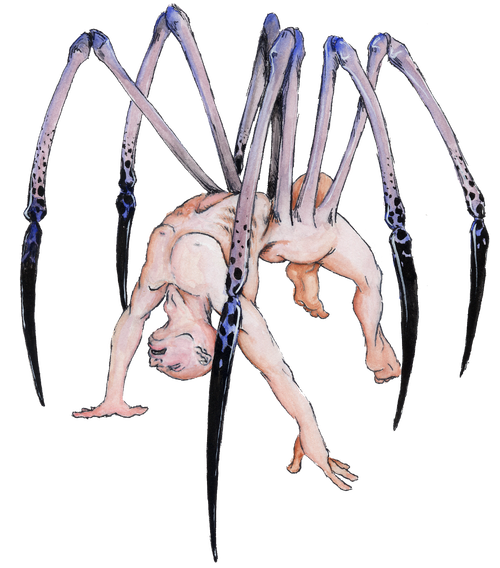
The Sages are librarians and archivists who study ancient history and occult secrets. Their magic-craft consists primarily of the theurgy skill. Theurgy is sorcerous magic empowered by familiars. Some examples of theurgy spells (we call them variants, because they are variant applications of the skill) are conjure horrible delights (which conjures shards of metal and glass into an enemy’s throat), the curse of curds (which forbids the target from eating anything but cheese), or harbor agony within (which transfers damage from the target to the theurgist). The Sages of Tuidroth also practice the time-honored art of philtrology , the study and creation of puissant potions, oils, powders and mists from herbs and animal products.
The Jharsilde are scientists and rational academics who pose as normal professors at one of three collegia throughout Rullaea. They practice the “metasciences” of alchemy and metaphysics. Alchemy relies on chemical reagents and some example variants are pressure differential (which causes creates a vacuum and causes containers and cells to explode), buckminster’s shroud (which creates a thin plastic-like sheet composed of geodesic carbon molecules that tightly envelopes objects), or covalent adhesion law (which creates covalent bonds, binding objects together). Metaphysics is powered by profound comprehension of complex mathematical formulae that describe physics and reality. Some typical metaphysics variants include doppler effect (which uses tiny shifts in light to determine distant and rate of movement for distant moving objects), hadrionic folding theory (which employs hadrionic particles to fold large objects into the size of a playing card), or skeptical falsification theory (which dispels other variants by scientifically proving that they are violating the laws of nature). A particular favorite of our play-testers, though rarely used because it’s so powerful, is the orbital escape law (which harnesses gravity to send the hapless target into orbit).
The quel-noron suborder of pentonite monks, a few of whom reside in any pentonite retreat, are experts in close quartered unarmed combat. The Order of Quel-Noron is an ancient sect that was born to protect the inhabitants of often remote and defenseless monasteries who were prey for wild animals, brigands and bandits. In addition to their prodigious discipline and athletic abilities, quel-noron have access to the body magic called Shen. Shen develops and channels natural energies through the body to perform extraordinary achievements of corporeal and spiritual skill. Some typical shen variants include vital strike of the night (which manipulates vital spots on opponents to render them blind), throw of disrobing (which allows the practitioner to throw an opponent out of their clothing (packs and scabbards included)), restrict as the dam (which allows the practitioner to control the blood flow in their own body) and step as the fly (which allows the practitioner to move on inverted surfaces, such as ceilings).
The mysterious discipline of mentalism is not practiced in Rullaea, and will not be discussed here.
The mechanics of the arcane in Epic RPG
Using variants is powered by quintessence points. The attributes (range, duration, damage, etc) of most variants increase with higher skill rolls that virtually all magic scales in power to that of the caster. This keeps lower cost variants useful regardless of the overall power level of the game. Also, different variants have different ways to defend against them. Some can be blocked by a shield, others by an arcane skill called dominion (that is initially only available to “magic-users”), and others, like poison, have no defense, except in after the fact remedies. All of this adds up to a magic system that is really fun to play regardless of the power level of the character.
What is the (default) setting like?
Eslin is a huge place. The Atlas of Eslin chronicles three continent-sized Realms, each large and deep enough for campaign after campaign of new and heroic adventure. Following for each Realm is a formal introduction and an informal paragraph capturing the feel of each setting.
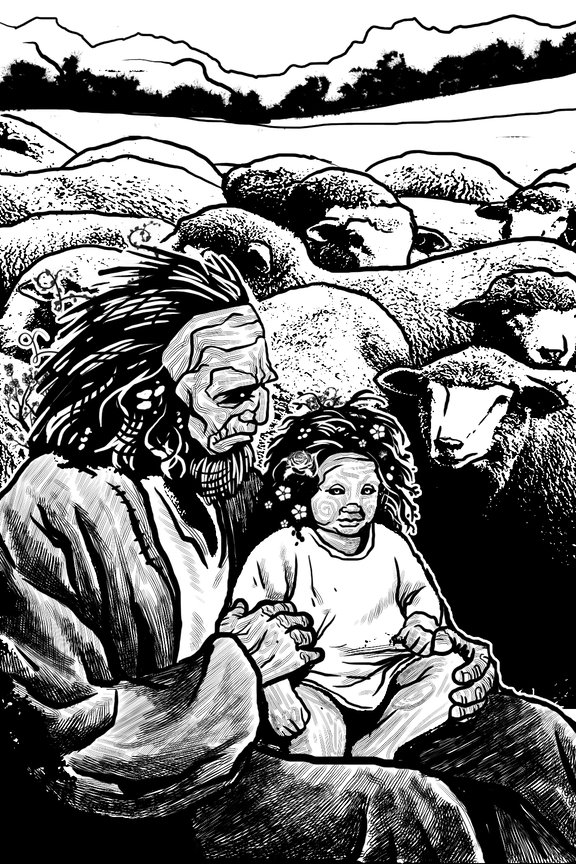
Rullaea is a land of misty, rolling hills and deep forests; isolated keeps and hardy border wardens guard the young cities of the north and west frontiers, which are contrasted with thriving and venerable metropolises to the south and east. The Heart Realm is relatively new to civilization after an extended dark age; little is known of the land’s previous history. Four hundred years ago, the acclaimed King Donelgaen united what is now Meath, instituted the common language, Donish, and restored the Virtuous Pentad to the people. Pentonism, the philosophical teachings of the Prophet Erelae, is the accepted religion of the Heart Realm, and the Pentonite church is respected and powerful. The High Kingdom of Meath has a central political and geographic position, but the other countries of the region are as ambitious, if not as large; they engage in a constantly changing dance of alliance and betrayal.
Feel: A cool, wet, mist- and mushroom- covered landscape. High feudal culture. The dominant spiritual philosophy is the “godless” fivefold path of Pentonism. Two human breeds are joined by the Celarri - a nonhuman alchemically engineered race. Political intrigue, ancient cultures, and the scientific magic of the Jharsilde highlight this realm.*
Rimenor: A rugged, mountainous land filled with wild unexplored places, fast rivers and few inhabitants, Rimenor is a vast wilderness inhabited by a tribal people that call themselves Fosts. Mountains dominate the landscape and all open land is filled with sequoia and giant white pine forests. There are no cities here, nor really any roads, just small villages and the occasional “stong,” its hewn logs hardly interrupting the endless procession of tree and rock to breathtaking and isolated fjords. Fostic religion is inherent in all social interactions, as all see themselves on a mythological journey to Arshall, the home of the gods. The almost good-natured warring between Fostic tribes turns deadly earnest when pitted against an incursion from the north by giants, the ancient enemy of Great Nature who they believe they were literally created to fight. Rimenor is cold and unforgiving, but for the warrior seeking glory or the seer questing for sight, it is the best place this side of Arshall.
Feel: An icy northern realm filled with fjords, endless pine forests, snow-capped mountains, and the Fost race of tribal peoples. Survival, myth, and primal adventure share top billing. For your inner Cimmerian.
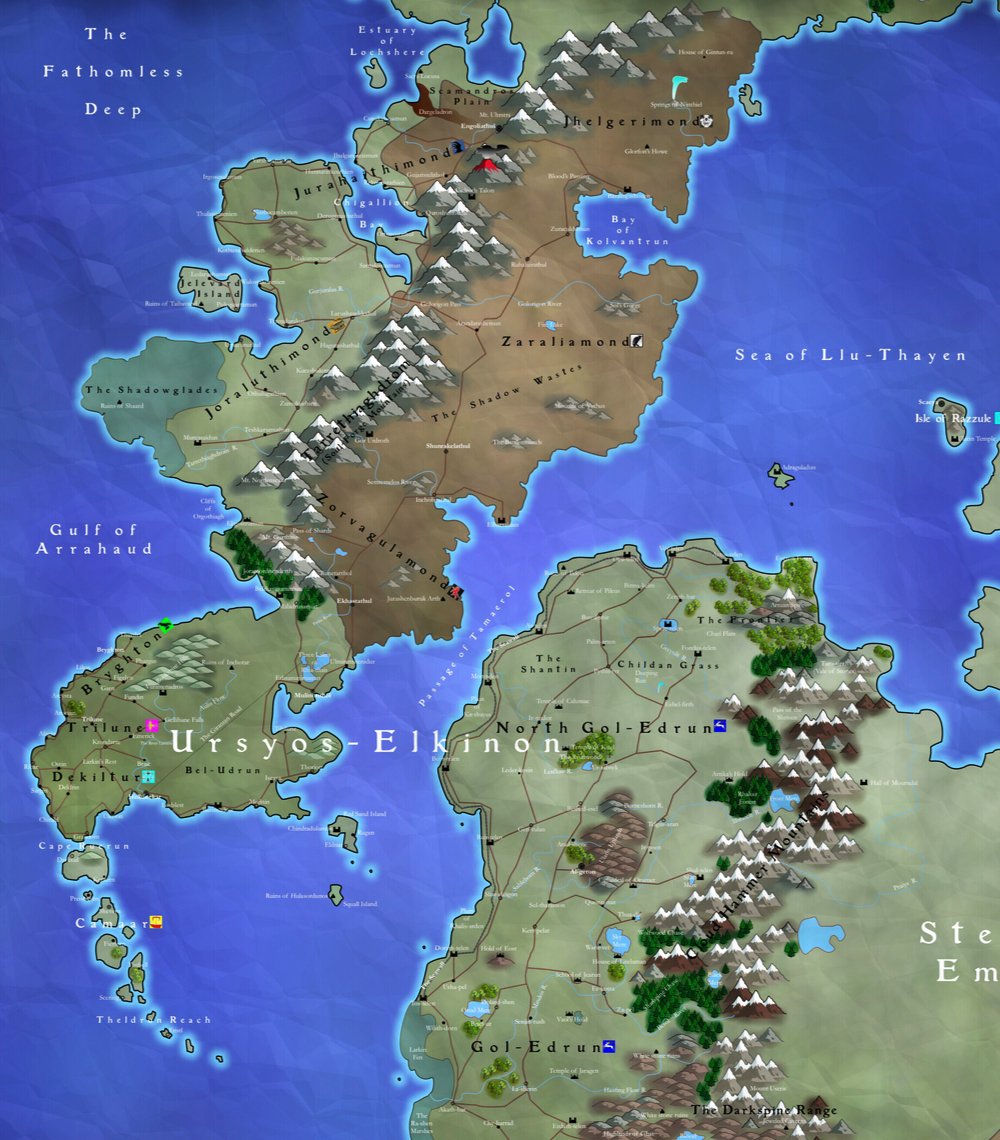
Ursyos-Elkiknon is an incredibly diverse realm: the ancient human cultures of the Giren and Holdrean peoples were invaded through an other-worldly rift by the seven-foot tall, grey-skinned Buruk. The cruel, mentalism-wielding Buruk conquered the western half of the realm. The Giren culture (and the former country called Bel-Edrun) that lives there is almost completely subjugated, though there are rebel groups. The Holdreans in the east, in the republic of Gol-Edrun and kingdom of Torith and surrounding lands, hold their homes against the Buruk in an incessantly shifting landscape of tribute or war. Also of note is Razzule, the hidden island of the mystic Stedyon race, mentalists of great power who oppose the Buruk.
Feel: A temperate and dry rugged landscape, blasted in parts by meteor showers the inhabitants call Ringfire. Races include the stoic Giren and wild Ro-Elem humans and the massive, mentalism-wielding Buruk, the scavenging Lemui, and the mysterious Stedyon nonhuman races. The Overlord Buruk hold savage dominion over subjugated humans who, nevertheless, scheme revenge and revolt, aided by ever-dwindling independent territories under human rule.
What are the main conflicts in the setting?
We’ve been careful to provide many opportunities for GMs to drive a campaign. On a mechanical level, the Game Manual has many tables devoted to conflict- and event-driven adventure and campaign creation. With regard to setting (and your question), we’ll look a bit into Rullaea for examples of conflicts and secrets/mysteries. Rest assured that Ursyos-Elkinon, the Realm where most humans are subjugated under the iron first of powerful inhuman overlords called the Buruk, and Rimenor, where the Fost tribes roam silent forests and mythic fjords, (the other two realms in the Atlas of Eslin: Volume 1) are equally complex.
As for Rullaea:
-
Guilds/Professions/Mentors. The starting point for characters in Epic RPG is a deep source of potential conflict. Competing mercenary companies, the two primary and vastly different arcane guilds of the logical Arcanum and the intuitive Sages of Tuirdroth, scheming trade guilds, the intricate and fathomless workings of the Pentonite Church - all are fuel for story.
-
Politically, Rullaea is running from stability to instability. A huge kingdom called Meath is dominant, but about fifty years ago a large chunk of it (which now calls itself Severness) broke off into independence, and another region called Ehrlyr just recently seceded. Factor in character descriptions of major players in the twenty-odd smaller divisions in those and the other major countries in Rullaea (with feuds, alliances, relationships between them defined), and you’ve got plenty of opportunity for story.
-
Ethnicity. Rullaea holds two human races, the northern and western Rullaeans, and the Merethi (who claim provenance from an ancient continent-spanning empire), who live more in the south and east. Rullaeans are dominant at the moment, but there are rumors and unrest all through the south of Meath, which many attribute to Merethi pride and dissatisfaction.
-
The Arcanum. The secret order of alchemists and metaphysicians, based inside Collegium system of three universities, have advisers placed with heads of state and important political and economic players throughout Rullaea. What’s that about?
-
Franks and Gaul Issues. Severness and Dorient, the northern countries of Rullaea, maintain constant border wars with the Fost tribes of the northlands.
-
Religious Schisms. The beast-like Cult of Fauves and a mysterious dissenting sect of Pentonism are out there to cause problems.
-
The Ring. A few ancient texts from the Merethicles empire mention an orb, a satellite called a moon, which circled the earth, and also a cataclysm of, well, cataclysmic proportions. At the present, a faint ring is visible during the day, lighting the night sky.
-
Secret Masteries. Each guild, profession or mentor has secret masteries and grand masteries available to those who devote themselves to their teachers. These individual rewards (ranging from skill benefits to social ones to monetary one to arcane ones to mysterious ones) are available only to characters through a combination of skill, dedication and role playing. But they’re way cool.
Are the rule books written with the intent that users will run the game in your setting, or are the rules more generic?
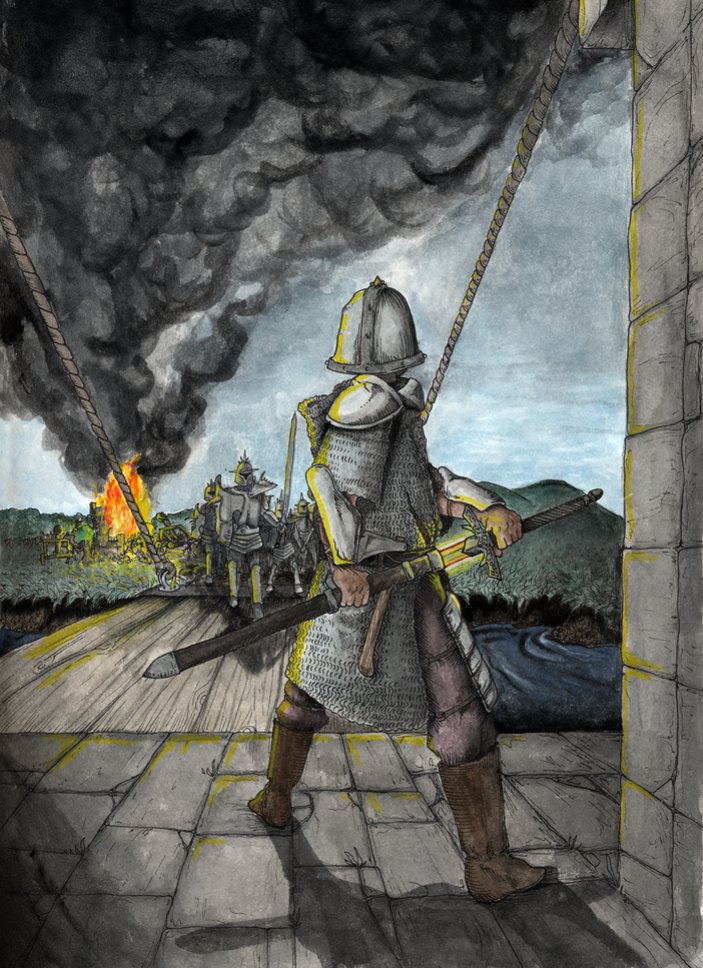
The rule books were written from the standpoint of folks who ran games in our self-designed campaign settings, which vary widely from each other in technological and geographical setting, from just past stone age to on the edge of printing presses, etc.. We devote a chunk of text toward creation of individual settings in the Game Manual and will publish some soon in the blog, as well, and other folks’ settings could be used with a few tweaks - the most notable being the guild/profession part of character creation, which would require GMs to create a number of options (the more sophisticated realms in Eslin have upwards of 50 starting guilds/professions/mentors) for professional beginnings. We find that part one of the most fun things about writing a setting - it really allows you to create depth through professional rivalries and placing guilds in various sociopolitical contexts, and forces the creator to modify and massage the feel, economics and flavor of a setting. Also, most settings are chock full of professions and guilds to begin with they just need to be altered a bit to jive with the Epic RPG system. Short answer: yes, the rules cross-apply, but the person in charge will need to make up some professions to make it work well.
What makes your game tell stories better (either through motivation mechanics or some other rule mechanics that rewards players for playing their character’s desires or fears hard)?
Epic RPG is designed to encourage narrative. We think that story and character development are the most important thing in role playing, and here’s how we encourage it.
We have a series of options for rolling (or choosing) disposition, morals and motivation during the character creation process. Of course, in the course of a long, full adventure dispositions and morals can change. What happens when an upstanding, rabidly honest rich kid falls from grace and is starving and is staring at a pie cooling in a window with no pie owner to be seen? Is his choice to grab the pie and eat it logical or aberrant? Well, we leave that to the GM to decide.
Sole authority for awarding experience (which allows skill growth and purchase of masteries and grandmasteries, some of which lead not just to specialized skills, but also social and even monetary gain) lies in the hands of the GM, not the system, and we encourage GMs to reward consistent, daring play and punish random, self-serving choices, up to the point of actions like removing or disabling the powers of a monk who ignores his vows or the expulsion (and pursuit) of a character who ignores the Arcanum’s most basic requirement that all magic must be performed in secret. It puts an extraordinary amount of power the storyteller’s hands, but that power is balanced by the fact that a GM who is a butt head and abuses that power won’t have players for very long. That said, the rules of play are wide-ranging and definitive to support GMs and players. The reality on the ground, or the how of things work in the game world, is supported by a wide range of non-intrusive and thought-through systems. It’s the why that we give the character and GM full reign to develop.
In short: Players make choices (or rolls) at creation that define their emotional makeup, and consistency, creativity or aberration are rewarded or penalized by the GM.
What about the skill system? If a player wants to play, say a fighter or a mage, how would he go about doing so, and how would his character creation experience differ from other RPGs?
This was a core issue when developing Epic. What is a fighter or a wizard? We thought that one of the barriers to having a richer role playing experience is a need to relate what a character does to the world in which the character lives. One of our primary design goals was to look for ways to connect characters more completely to the setting for which they are generated. Also, the skill system is designed to offer characters a wide array of choice and control over how they grow in the course of a heroic epic.

When players make characters in Epic they go through a process of that determines background events that shape the character’s life (this is very flexible and can be rolled using our tables or made up using your imagination, or a combination of both, or skipped if no one cares and wants to whip up a quick character). Toward the end of the character’s development a profession, guild, lone master, or some other teacher is chosen from the specific realm in which the campaign will take place. This serves as the character’s apprenticeship and grants them their initial skill set. The professions are all part of the society from which they come. For example, if you were playing in the barbaric northlands of Rimenor you could apprentice with a Fostic Kjodi (shaman) that practices theurgy and philtrology (potioncraft), but you couldn’t learn from an alchemist or a metaphysicist, they just don’t exist there.
Likewise, in Rullaea, a high feudal realm, you could play a Paladin of Tellimod (a champion of the largest kingdom of Meath and sentinel of the “godless” Pentonite church), but you couldn’t apprentice with the Blizzard-Eye rangers of the Fost.
Of course, if a player really wants to play a barbaric Fost shaman in the kingdoms of Rullaea, the GM could have the character travel to the north or get lost in the wilderness and meet a ranging hermit shaman. Whatever the player chooses, the GM is furnished with tons of background information to work into an intriguing story. We have a lot of professions/guilds in each of the realms. The more technologically sophisticated realms contain upwards of fifty guilds/professions/mentors each.
For your perusal, the first dozen from Rullaea (in alphabetical order):
- The Arcanum - secret order of alchemists and metaphysicists
- Archers of the Scarlet Mark - mercenary company of Dorient famed for their mounted archers.
- Azure Thrush - fife corps of musicians attached to the royal army of Meath, treasured by the rank and file.
- Balder Brotherhood - retired soldiers/mercenaries; the best trainers in all of Eslin and they brew their own brand of stout called Balder’s Brew.
- Bard’s Guild - well, the bard’s guild. - A loose organization tied together by cultural tradition.
- Black Boar Brigade - mercenary company serving Goe’Lad as vanguard and scout units, renowned for physical toughness and the tattoo of a boar on the upper left arm.
- Black Sail pirates. - When the black sails are spotted, all know that doom follows.
- Blades of Ehr - High-end cat burglars and sometime political operatives for the King of Ehrlyr.
- Cavaliers of the Lance - knights devoted solely to the protection of women, skilled in courtship and etiquette. Not closely associated to the Pentonite church.
- Constables of Brightwall - law officials in Goe’Lad. Their prowess as bounty hunters is legend.
- Counsel Macabre - elite assassins from Ehrlyr. They are a small circle of less than twenty men and women.
- Gepeto’s Scops - a famous company of tumblers, musicians and master storytellers without peer.
As the game is played and the character develops, they can stay within their profession, switch to a different one or drop all professional affiliations (all of which are handled solely through role playing). Since all skills are available to any character (given they have the time and a teacher) these decisions are handled through role playing and the unfolding story of the campaign. If the character stays within their profession they have the chance to gain titles, which have social rewards garnered through role playing, and also secret masteries that are available only to that organization. In the end, characters in Epic don’t just progress through their skills, but because there are defined through their culture, they progress as part of the culture from which they came.
What about more information on skills? Do they affect game play from a narrative standpoint?

Yes. - The narrative model that we ascribe to, and gear ourselves toward, and talk about constantly in the game books, is one of collective storytelling and maximum choice for players. In that vein of maximum choice, characters are never tied to a specific path or set of skills. Dedication to developing a skill is rewarded by greater facility and specialties, masteries and grandmasteries, but the character can at any time (if she wishes or the story dictates) have a crisis of conscience, dump her career as a healer and pick up a stiletto and some nightshade poison. Of course, she’ll have to start learning how to use those things, and will at first still be much better at stitching than sticking people.
a. Mental makeup, or Talent , determines how well any character can learn a specific skill. If your brain is not wired with the Will (one of five mental attributes, each controlling the learning of various skills) to be able to hit people and stay in the heat of melee combat, you can progress in skill at kicking booty, but it will take you a lot longer than your steely-eyed companion who seems just designed for that sort of thing.
b. The skill system allows (and encourages) the flexibility to begin entirely different life paths if the character desires it, and also rewards determined dedication to a specific discipline or disciplines.
c. As for the above example, Epic RPG provides several different character creation models - point allocation or rolling or a combination of the two - for those who wish to custom design their characters and for those who leave their fates to the will of the dice, and variations in-between.
d. We’re also of the opinion (and our upcoming campaign/adventure offerings will support this model) that characters should determine the nature of what happens almost as much or as much as the GM, which means avoiding railroading situations and pigeonholing, and working furiously and improvisationally to accommodate whatever the players choose to do, all the while guiding the greater story, and helping characters discover the thrilling possibilities that are out there for them. I know that’s theoretical and not hard and systemic - we do provide a heap of adventure generating tools and storytelling help and advice for Game Masters in the Game Manual, but at some point systems have to step aside and give way to your group’s storytelling aesthetic.


